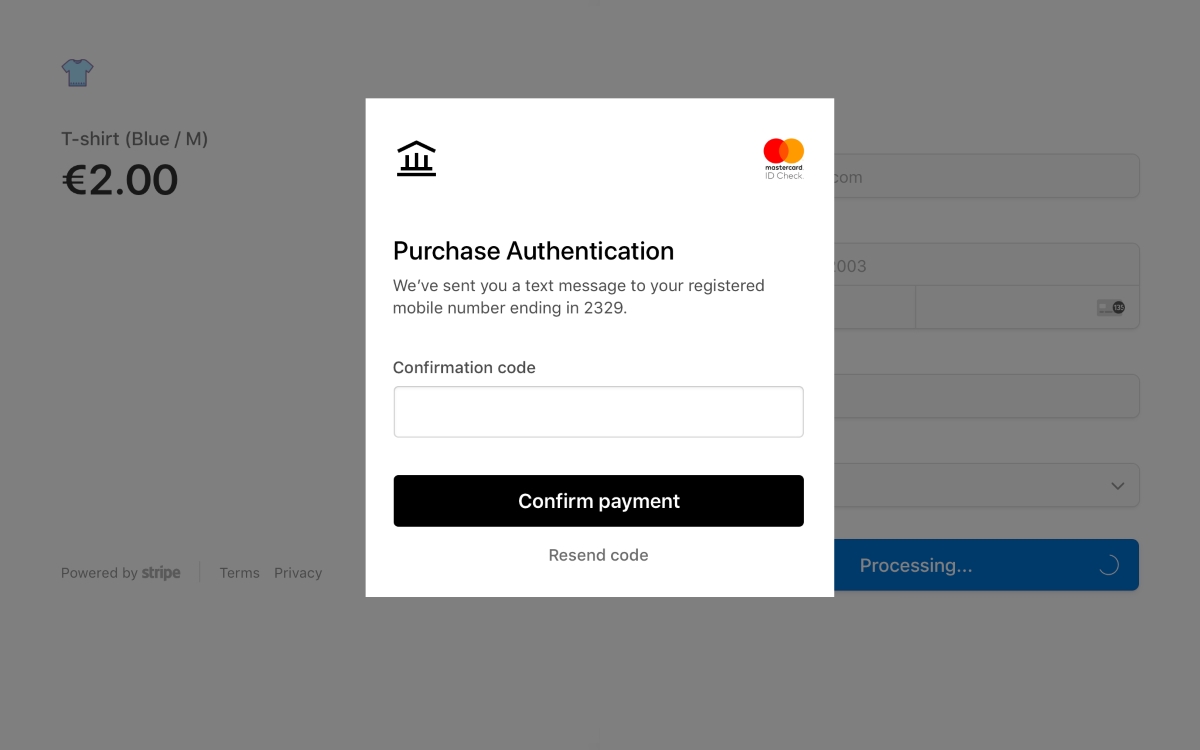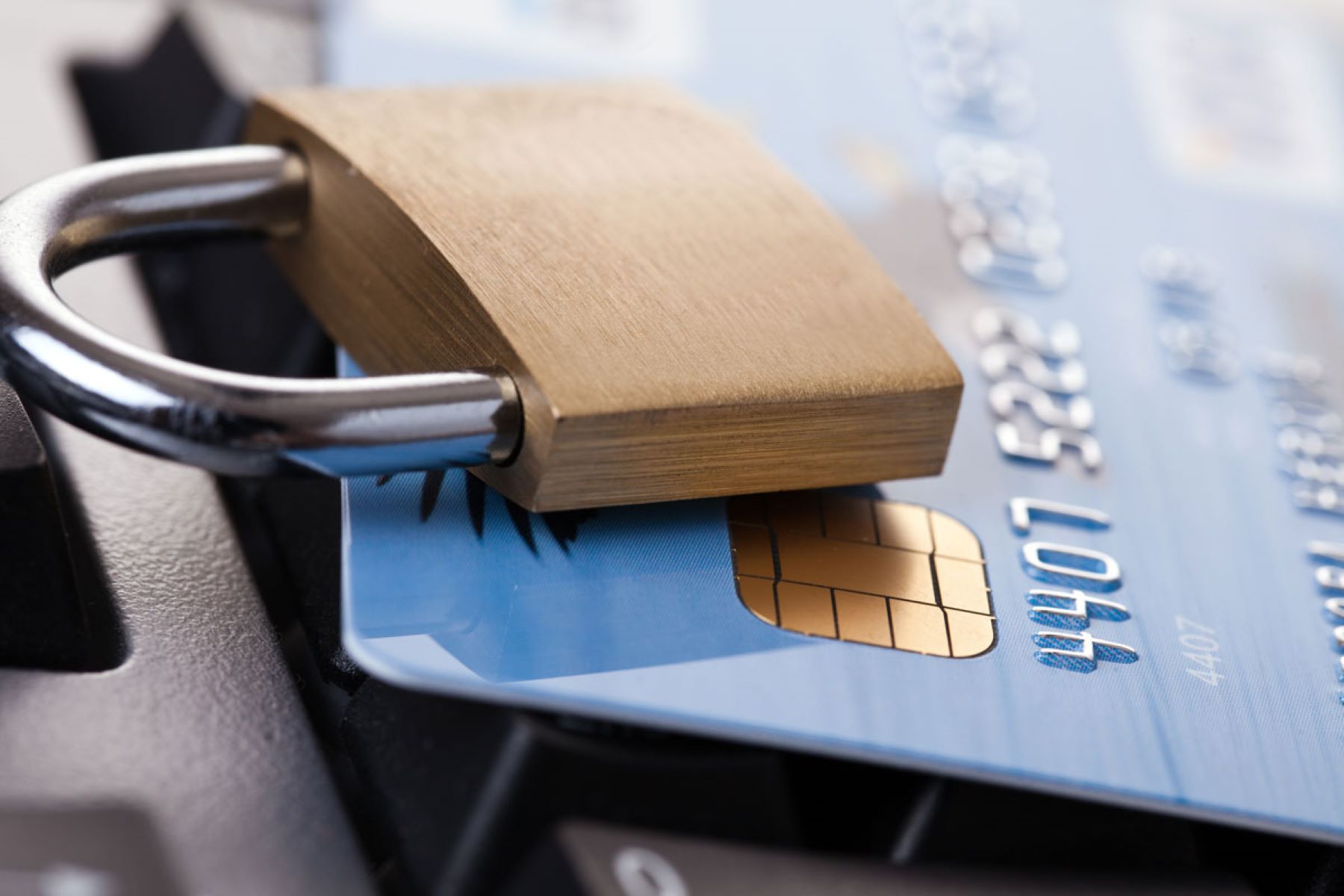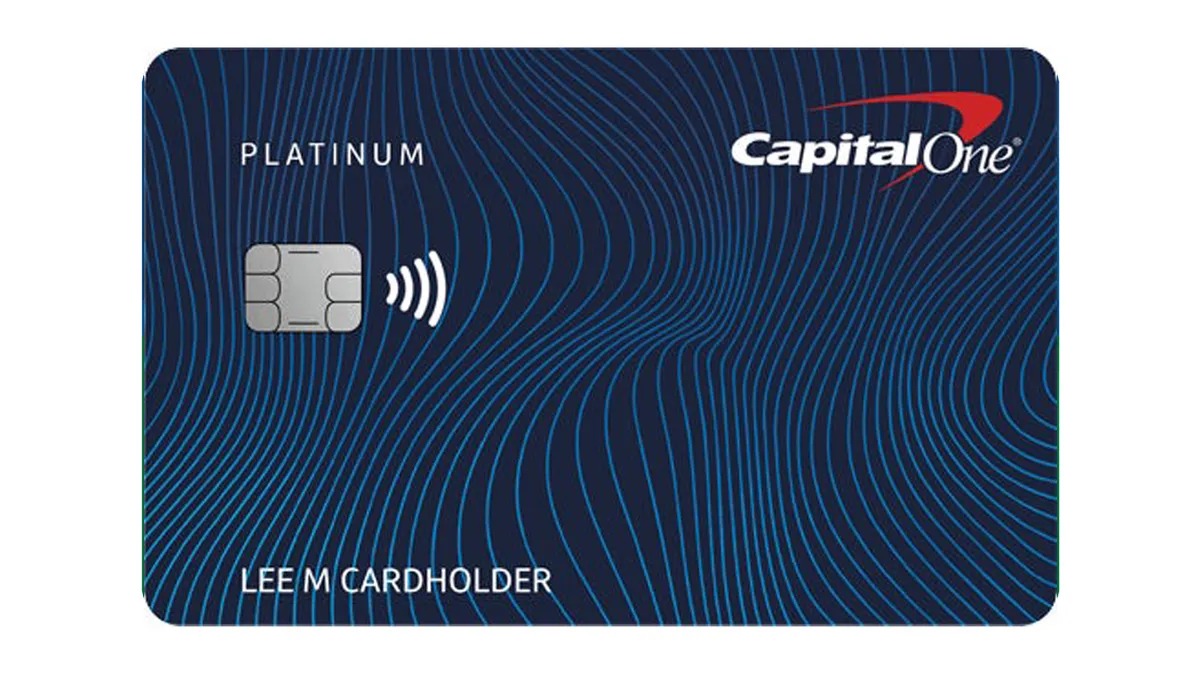Home>Finance>How To Obtain A Secured Card With No Credit History


Finance
How To Obtain A Secured Card With No Credit History
Published: March 2, 2024
Learn how to get a secured card without a credit history. Discover essential finance tips for building credit and improving financial health. Start your journey to financial stability today!
(Many of the links in this article redirect to a specific reviewed product. Your purchase of these products through affiliate links helps to generate commission for LiveWell, at no extra cost. Learn more)
Table of Contents
Introduction
Building Credit When You Have No Credit History
Securing a credit card can be an essential step in establishing a solid credit history. However, for individuals without a credit history, obtaining a traditional credit card can be challenging. In such cases, a secured credit card can serve as a valuable tool for initiating and building credit. This article will guide you through the process of acquiring a secured card when you have no credit history, providing insights into understanding secured cards, researching available options, applying for a secured card, and utilizing it responsibly to build a positive credit profile.
Having no credit history can be a significant obstacle when applying for traditional credit cards, as lenders rely on credit reports to assess an individual's creditworthiness. Without a credit history, it's challenging to demonstrate responsible credit usage, which can lead to rejections or unfavorable terms when applying for unsecured credit cards. However, a secured credit card offers a viable alternative for individuals with no credit history. By providing a cash deposit as collateral, secured cards mitigate the risk for the card issuer, making them more accessible to those seeking to establish credit for the first time.
In the following sections, we'll delve into the nuances of secured cards, explore the process of researching and applying for a secured card, and outline strategies for leveraging a secured card to build a positive credit history. Whether you're a young adult venturing into the world of credit for the first time or someone starting over after financial challenges, understanding how to obtain and utilize a secured card can be a pivotal step in your financial journey. Let's embark on this insightful exploration of secured cards and how they can serve as a springboard for establishing a robust credit foundation.
Understanding Secured Cards
Demystifying the Concept of Secured Credit Cards
Before delving into the process of obtaining a secured card, it’s essential to grasp the fundamental concept behind secured credit cards. Unlike traditional unsecured credit cards, which extend a line of credit based on the cardholder’s creditworthiness and financial history, secured cards require a cash deposit as collateral to secure the credit limit. This deposit serves as a form of protection for the card issuer in case the cardholder defaults on payments, providing a level of assurance that encourages the approval of applicants with no credit history or a limited credit profile.
Secured cards typically mirror the functionality of traditional credit cards, allowing users to make purchases, build credit, and engage in financial transactions. However, the initial deposit, which often determines the credit limit, distinguishes secured cards from their unsecured counterparts. The deposit amount varies among issuers but is commonly in the range of $200 to $500, offering a level of flexibility for individuals seeking to initiate their credit journey.
It’s important to note that the deposit is not utilized to cover monthly payments unless the cardholder defaults on the account. Responsible use of the secured card, including making timely payments and maintaining a low credit utilization ratio, can contribute to positive credit reporting, thereby establishing a favorable credit history over time. Additionally, some secured card issuers may review the account after a period of responsible usage and transition the cardholder to an unsecured card, refunding the initial deposit.
Understanding the mechanics of secured cards empowers individuals with no credit history to make informed decisions when embarking on their credit-building endeavors. By comprehending the underlying principles of secured credit cards, prospective cardholders can approach the process of obtaining and utilizing a secured card with confidence, knowing that it represents a viable pathway to establishing a robust credit foundation.
Researching Secured Card Options
Exploring Available Secured Credit Card Choices
When venturing into the realm of secured credit cards, conducting thorough research is paramount to identify the most suitable option that aligns with your financial goals and preferences. Numerous financial institutions and credit card issuers offer secured card products, each with distinct features, terms, and benefits. By evaluating these offerings, you can make an informed decision and select a secured card that complements your financial circumstances and aligns with your credit-building objectives.
Begin your exploration by assessing the deposit requirements and credit limits associated with various secured card options. While some issuers may offer lower minimum deposits, others might provide higher credit limits or additional perks, such as cashback rewards or credit education resources. Consider your budget and the amount you can comfortably allocate as a deposit, as this will influence the initial credit line and the overall accessibility of the secured card.
Furthermore, delve into the fee structures of different secured cards, including annual fees, application fees, and potential penalty fees. While some secured cards may feature minimal fees, others might impose higher charges, impacting the cost-effectiveness of the card. Additionally, prioritize secured card offerings that report to all three major credit bureaus, as consistent reporting of your credit activity is pivotal in building a positive credit history.
As you navigate through the array of secured card options, consider the long-term prospects offered by each issuer. Some secured card providers may offer opportunities for transitioning to an unsecured card after a period of responsible usage, potentially refunding the initial deposit and upgrading the cardholder to an unsecured credit card. This pathway to progression can be a compelling factor when evaluating secured card choices, as it signifies the potential for advancement in your credit journey.
By meticulously researching secured card options, you can identify a suitable card that not only accommodates your current financial standing but also aligns with your aspirations for building and enhancing your credit profile. This discerning approach empowers you to make an informed selection, setting the stage for a constructive and rewarding experience as you embark on your credit-building endeavors.
Applying for a Secured Card
Navigating the Application Process with Confidence
Once you’ve identified a secured credit card that resonates with your financial objectives and preferences, the next step involves navigating the application process with clarity and confidence. Applying for a secured card entails several key considerations, from gathering the necessary documentation to understanding the implications of the application on your credit profile.
Before initiating the application, it’s advisable to review the specific requirements outlined by the card issuer. Typically, applicants are required to provide personal information, including their full name, address, social security number, and employment details. Additionally, the issuer may necessitate the submission of the initial deposit at the time of application, signifying the cardholder’s commitment to securing the card and initiating the credit-building journey.
As you proceed with the application, it’s important to verify whether the issuer reports secured card activity to the major credit bureaus. The reporting of your credit utilization, payment history, and overall account management to these bureaus is instrumental in establishing a positive credit history, thereby laying the groundwork for future financial opportunities. Prioritize secured card offerings that diligently report to the credit bureaus, ensuring that your responsible credit usage is duly documented and contributes to the enhancement of your credit profile.
Furthermore, be mindful of the potential impact of the application on your credit score. While secured card applications typically result in a minor and temporary dip in the applicant’s credit score, the responsible pursuit of credit-building endeavors can mitigate any adverse effects, ultimately leading to an overall improvement in the credit profile over time.
As you complete the application, it’s essential to review the terms and conditions of the secured card, including the annual fees, interest rates, and any associated charges. Understanding these terms empowers you to make informed decisions and ensures that the secured card aligns with your financial goals and capabilities.
By approaching the application process with attentiveness and a clear understanding of the implications, you can embark on your secured card journey with confidence, knowing that each step contributes to the establishment of a robust and favorable credit history.
Using a Secured Card to Build Credit
Leveraging Responsible Credit Usage for Long-Term Benefits
Upon successfully obtaining a secured credit card, the manner in which it is utilized significantly influences its effectiveness as a tool for building credit. Responsible and strategic usage of the secured card can yield substantial benefits, laying the groundwork for a positive credit history and fostering financial opportunities in the future.
One of the fundamental strategies for leveraging a secured card to build credit involves maintaining a low credit utilization ratio. This ratio reflects the percentage of the credit limit that is utilized, and a lower utilization rate signals responsible credit management. Aim to keep your credit utilization below 30% of the available credit limit, as this demonstrates prudent usage and contributes to a positive credit profile.
Consistently making on-time payments is another pivotal aspect of utilizing a secured card to build credit. Timely payment history is a cornerstone of a robust credit profile, and ensuring that all monthly payments are made in full and on schedule reflects reliability and financial discipline. By adhering to this practice, you establish a track record of responsible credit management, which is duly reported to the credit bureaus, fortifying your credit history.
Regularly monitoring your secured card activity and overall credit report is essential in gauging your progress and addressing any discrepancies or inaccuracies. By staying vigilant and proactive in reviewing your credit report, you can promptly rectify any errors and maintain the integrity of your credit profile, ensuring that it accurately reflects your credit behavior and financial reliability.
As you navigate the realm of credit-building with a secured card, it’s important to approach the process with patience and a long-term perspective. Building a robust credit history takes time, and consistent adherence to responsible credit practices sets the stage for enduring financial benefits and opportunities.
By conscientiously utilizing your secured card, maintaining a low credit utilization ratio, and prioritizing timely payments, you pave the way for a positive credit trajectory, positioning yourself for enhanced financial prospects and the attainment of unsecured credit options in the future.
Tips for Responsible Credit Card Use
Nurturing Healthy Credit Habits for Long-Term Financial Well-Being
As you embark on your credit-building journey with a secured card, embracing responsible credit card use is instrumental in fostering a positive credit profile and reaping long-term financial benefits. By incorporating prudent financial practices into your daily routine, you can optimize the impact of your secured card and lay a solid foundation for your credit future.
First and foremost, strive to maintain a budget-conscious approach to your credit card utilization. While the availability of a credit line can be enticing, exercising restraint and utilizing the card judiciously aligns with sound financial management. By adhering to a budget and discerningly utilizing your secured card for essential purchases, you cultivate a mindset of fiscal responsibility and avoid excessive reliance on credit.
Regularly monitoring your credit card activity and diligently reviewing monthly statements is crucial in detecting any unauthorized charges or errors. By promptly addressing any discrepancies, you safeguard the integrity of your account and avert potential financial repercussions. Additionally, monitoring your account activity empowers you to track your spending patterns and assess your credit utilization, enabling informed adjustments to optimize your credit management.
Strategically leveraging your secured card for recurring expenses, such as utility bills or subscriptions, can contribute to consistent credit activity and facilitate the establishment of a positive payment history. Automating these payments or setting reminders for due dates can streamline your credit management process and mitigate the risk of missed payments, reinforcing your credit reliability.
Furthermore, refraining from maxing out your secured card and maintaining a considerable buffer between your balance and the credit limit reflects prudence and responsible credit utilization. This practice not only contributes to a favorable credit utilization ratio but also positions you as a conscientious credit user, fostering trust with potential future creditors.
Lastly, cultivating a proactive approach to credit education and financial literacy can amplify the impact of your credit-building efforts. Engage with resources that offer insights into credit management, budgeting, and debt repayment strategies, empowering you to make informed financial decisions and fortify your long-term financial well-being.
By embracing these tips for responsible credit card use, you can harness the potential of your secured card as a catalyst for building a robust credit history, nurturing healthy credit habits, and positioning yourself for enduring financial success.
Conclusion
Fostering Financial Empowerment through Secured Credit Cards
Embarking on the journey to establish a solid credit history, especially when faced with no prior credit experience, can be a daunting yet pivotal endeavor. Secured credit cards emerge as a beacon of opportunity, offering a viable pathway for individuals to initiate their credit journey and pave the way for enduring financial well-being. By comprehending the nuances of secured cards and navigating the process of obtaining, utilizing, and optimizing their impact, individuals can lay a sturdy foundation for a positive credit trajectory.
Understanding the fundamental concept of secured credit cards, wherein a cash deposit serves as collateral to secure the credit limit, empowers individuals with no credit history to access a valuable financial tool. By diligently researching secured card options, assessing deposit requirements, fee structures, and long-term prospects, prospective cardholders can make informed decisions that align with their financial aspirations.
Navigating the application process with attentiveness and a clear understanding of its implications enables individuals to secure a secured card with confidence, knowing that each step contributes to the establishment of a robust and favorable credit history. Leveraging responsible credit usage and adhering to prudent financial practices while utilizing a secured card can yield substantial benefits, fostering a positive credit profile and positioning individuals for enduring financial opportunities.
By embracing tips for responsible credit card use, individuals can nurture healthy credit habits, optimize the impact of their secured card, and fortify their long-term financial well-being. Through patience, diligence, and a proactive approach to credit education, individuals can harness the potential of secured credit cards as catalysts for building robust credit histories and positioning themselves for enduring financial success.
As individuals embark on their credit-building journey with secured cards, it’s essential to recognize the transformative potential of these financial instruments. Each responsible and strategic step taken with a secured card contributes to the cultivation of a positive credit history, fostering financial empowerment and opening doors to a myriad of future opportunities. With a firm understanding of secured cards and a commitment to responsible credit usage, individuals can navigate the realm of credit with confidence, laying the groundwork for enduring financial stability and prosperity.














